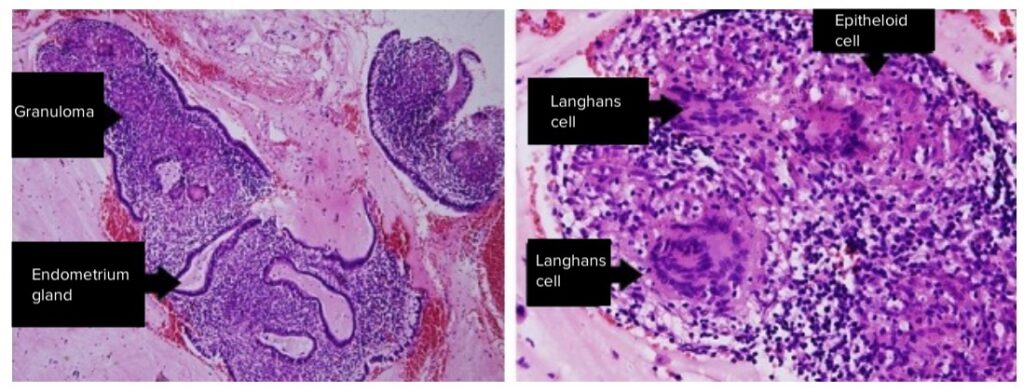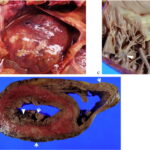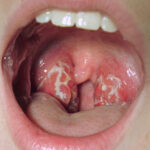Streptococcal endometritis is an acute or chronic inflammation of the endometrial lining of the uterus caused by Streptococcus species, particularly Streptococcus pyogenes (Group A) or Streptococcus agalactiae (Group B). This infection most commonly arises in postpartum or post-abortion women but can also occur after gynecologic procedures or instrumentation. If left untreated, it can progress to severe pelvic inflammatory disease, sepsis, and long-term reproductive complications.

Etiology and Risk Factors
Bacterial Pathogenesis
The primary pathogens involved in streptococcal endometritis are:
- Streptococcus pyogenes (Group A): highly virulent, often leads to systemic toxicity
- Streptococcus agalactiae (Group B): frequently colonizes the genitourinary tract, especially in pregnant women
Predisposing Conditions
Several risk factors increase susceptibility to this uterine infection:
- Recent childbirth (especially cesarean delivery)
- Retained products of conception
- Intrauterine device (IUD) insertion
- Multiple vaginal examinations during labor
- Poor aseptic technique during gynecological interventions
- Prolonged rupture of membranes
- History of pelvic inflammatory disease (PID)
Clinical Presentation
Common Signs and Symptoms
Streptococcal endometritis typically presents within 2 to 10 days postpartum or post-intervention and includes:
- Fever ≥ 38°C (100.4°F)
- Foul-smelling lochia or abnormal vaginal discharge
- Lower abdominal or pelvic pain
- Uterine tenderness on palpation
- Tachycardia
- General malaise and fatigue
In severe cases, the infection may escalate to bacteremia, septicemia, or toxic shock syndrome.
Diagnostic Approach
Clinical Evaluation
A thorough physical examination and patient history form the basis for suspicion of streptococcal endometritis. Particular attention should be paid to timing post-delivery or surgical procedures.
Laboratory and Imaging Studies
- Complete Blood Count (CBC): Elevated white blood cell count with a left shift
- Endometrial Cultures: Identify causative Streptococcus species
- Blood Cultures: Necessary in febrile patients to detect bacteremia
- Pelvic Ultrasound: Rule out retained products of conception or abscess formation
- C-Reactive Protein (CRP) & Erythrocyte Sedimentation Rate (ESR): Elevated inflammatory markers
Treatment and Management
First-Line Therapy
Empiric broad-spectrum intravenous antibiotics should be initiated promptly:
- Clindamycin + Gentamicin: Standard regimen with broad Gram-positive and anaerobic coverage
- Ampicillin or Vancomycin: Added in suspected Group B or resistant infections
Tailored Antibiotic Regimen
Upon culture results:
- Group A Streptococcus: Penicillin G remains the drug of choice
- Group B Streptococcus: Penicillin or Ampicillin, often with Gentamicin
Supportive Measures
- Intravenous fluid resuscitation
- Antipyretics for fever control
- Pain management
- Monitoring for septic complications
Surgical Intervention
In rare cases of abscess formation, retained placenta, or unresponsive infections, dilation and curettage (D&C) or hysterectomy may be required.
Prognosis and Complications
Timely and appropriate antibiotic therapy typically results in rapid clinical improvement within 48–72 hours. However, untreated or inadequately managed infections may lead to:
- Chronic pelvic pain
- Infertility
- Pelvic abscess
- Septic shock
- Disseminated intravascular coagulation (DIC)
Prevention Strategies
Obstetric Protocols
- Minimize vaginal examinations during labor
- Adhere strictly to aseptic techniques in all procedures
- Administer prophylactic antibiotics for cesarean deliveries
Postpartum Monitoring
- Early identification of abnormal lochia or fever
- Follow-up care within 1–2 weeks of delivery
- Immediate attention to signs of infection
Preconception Care
- Screening and treating bacterial vaginosis or Group B streptococcus colonization
- Educating patients on recognizing early symptoms
Streptococcal endometritis remains a serious postpartum and gynecologic infection, especially in settings with inadequate infection control. Prompt diagnosis, immediate antibiotic therapy, and preventive strategies significantly reduce morbidity and prevent long-term reproductive complications. Clinicians must maintain a high index of suspicion in postpartum women presenting with fever and uterine tenderness to ensure timely intervention and favorable outcomes.

